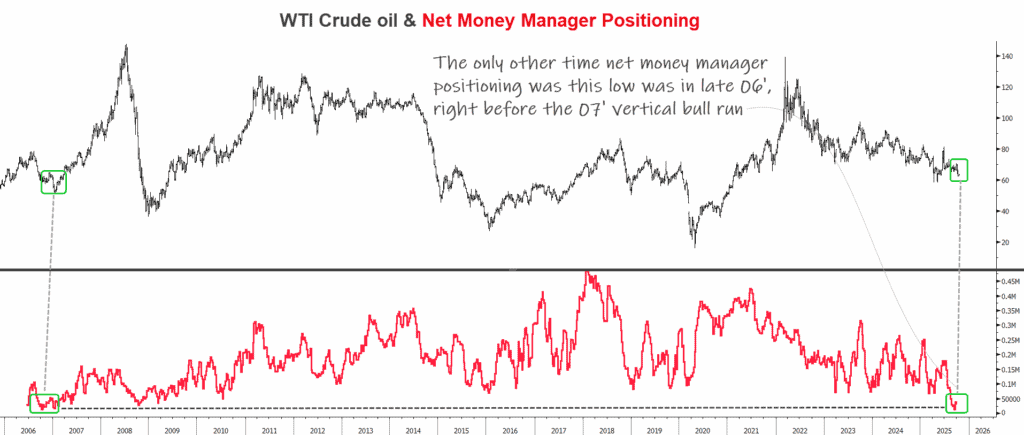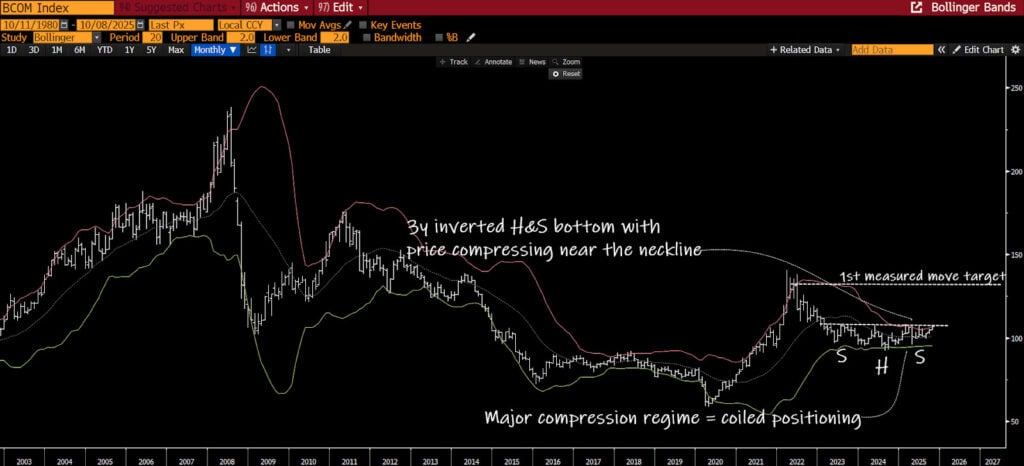The following is an excerpt from our weekly Market Brief. If you’re interested in learning more about Market Briefs and the Macro Ops Hub, click here.
The big macro wild card of late has been what Trump’s actual agenda will look like once his administration gets going; especially in respect to the dollar. Recent remarks from Trump and company are starting to provide some clarity here.
This past week the Trump camp made some notable comments about the dollar. Here’s the following via the WSJ (emphasis mine).
In his interview with the Journal on Friday, Mr. Trump said the U.S. dollar was already “too strong” in part because China holds down its currency, the yuan. “Our companies can’t compete with them now because our currency is too strong. And it’s killing us.”
The yuan is “dropping like a rock,” Mr. Trump said, dismissing recent Chinese actions to support it as done simply “because they don’t want us to get angry.”
Mr. Trump appears to be breaking with a recent tradition of presidents refraining from comments on the dollar’s level.
In another part of the interview, Mr. Trump said the U.S. might need to “get the dollar down” if a change in tax policy drives it higher. “Having a strong dollar has certain advantages, but it has a lot of disadvantages,” he added.
Here’s the following from the “Mooch”, Anthony Scaramucci, one of Trump’s closest advisors via the WSJ (emphasis mine).
Mr. Scaramucci said that while “we have to be careful about a rising” dollar, “if you get better than expected growth in the U.S., you can have a strong dollar and robust growth in the U.S. that will lift the global economy. “Growth will solve many of the problems on the table,” he said.
And via the FT.
Without committing to avoid intervention to lower the dollar’s value, Mr Scaramucci said he hoped that if the new administration could create fast growth, it would allow the US to deal with the tighter monetary conditions that come with a higher currency. “The truth of the matter is none of us really know what is going to happen,” he admitted. “What I think will most likely happen is that we’ll implement an infrastructure policy plan which is fairly dynamic, we’ll have a tax plan which is a lot more simple; and there will be a regulatory and executive order roll back very quickly.”
“You might not like the answer, but if you get better than expected growth in the US, even if the dollar is going up, we saw in the 1980s, you can have a strong dollar and fairly robust growth in the US that will lift the global economy.”
If you remember, I wrote the following in last month’s MIR:
The new administration rode a wave of populism into the white house. Trump’s platform is centered around American interest first and doing whatever it takes to bring back jobs, especially in the rust belt.
Many of those jobs are manufacturing jobs. US manufacturers don’t benefit from a rising dollar. Accusing China of artificially keeping the yuan weak in order to gain export share was a constant focus of the Trump campaign.
So it’s not difficult to imagine a scenario where the dollar rises enough to cause the Trump administration to intervene and reverse it. Similar to what Reagan’s Secretary of Treasury Jim Baker did in 85’, with the Plaza Accord.
It’s safe to say that the Trump administration would like a weaker dollar. But they may not care to actively push for a weaker dollar unless they feel it’s significantly hurting US growth; especially the manufacturing sector.
So a Vicious Circle is our most likely future, but how quickly it comes is tough to say. And that’s because we have a Fed that’s becoming increasingly more hawkish.
From the FT (emphasis mine).
Janet Yellen, the Fed chair, has warned that the US risks a “nasty surprise” if it waits too long to continue raising interest rates, adding that she expects the US central bank to tighten monetary policy a few times a year until 2019.
Following the Fed’s December decision to raise short-term interest rates for the second time in a decade, Ms Yellen said on Tuesday: “Waiting too long to begin moving toward the neutral rate could risk a nasty surprise down the road — either too much inflation, financial instability or both.” Delaying could force the Fed to catch up by raising rates rapidly, she said, which could in turn push the economy into a new recession.
It’s not just Yellen either, other members of the Fed board are beginning to show their talons as well.
The most notable being Lael Brainard who, until very recently, has been the most vocal dove on the board. Since the election of President Trump she has “astonishingly” become more open to running a tighter monetary policy.
Is this more aggressive hawkish tone in some part politically driven? I’ll let you decide. But Jesse Livermore (twitter handle) wrote a pretty apt thread on it if you care to check it out here.
Where does that leave us?
Well, we have two opposing forces (1) an administration that openly wants a weaker dollar especially if it starts hindering growth and (2) a Fed that is leaning towards more aggressive tightening (perhaps partially due to political reasons) even though there’s still clearly some capacity left in the system.
I’m sticking with my original call in the MIR. We’re likely to see a sizable selloff (lasting perhaps a few months) in the dollar over the near-term. This is due to positioning and sentiment (the dollar is one of the most overweighted holdings right now).
The retrace will push the “need for a weaker dollar” to the back of the Trump administration’s agenda. It will also boost inflation expectations in the short-term and provide more cover for the Fed to be aggressive.
This monetary policy divergence will ultimately lead to a much stronger dollar and an eventual attempt at a Plaza Accord type deal to reverse course much further down the road (think 12-18 months out).
But I should say, when politics becomes a bigger factor in macro, as they have now, the game becomes a lot more unpredictable. This is doubly true when you’re dealing with someone like Trump who’s a very unpredictable player.
So we’ll keep strong opinions very weakly held going forward and adjust fire as we move.
The above is an excerpt from our weekly Market Brief. If you’re interested in learning more about Market Briefs and the Macro Ops Hub, click here.







